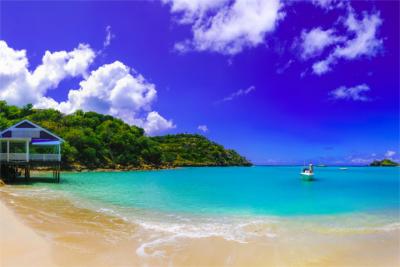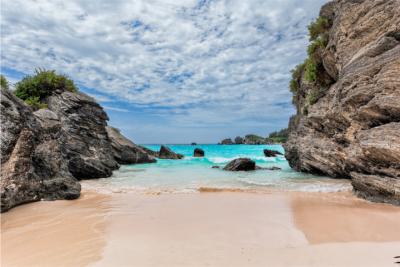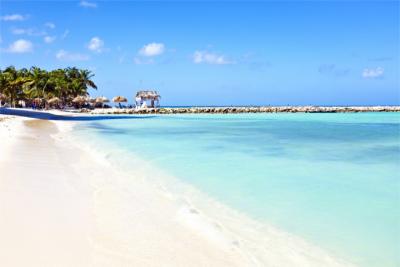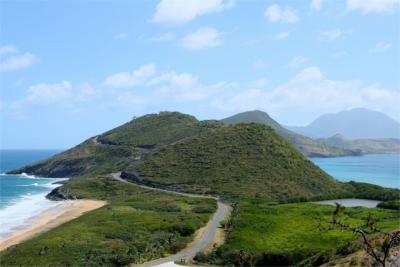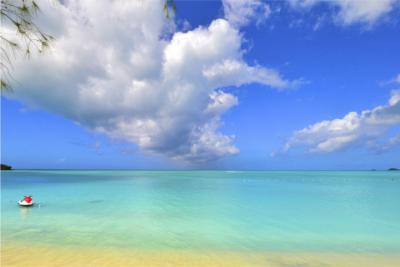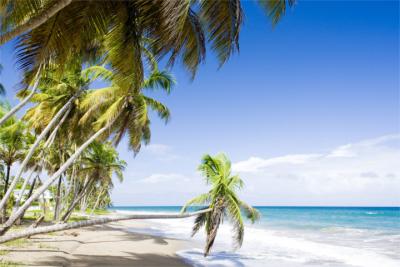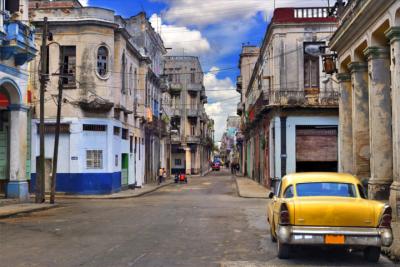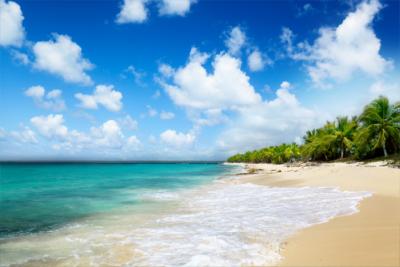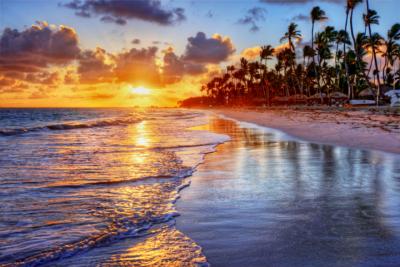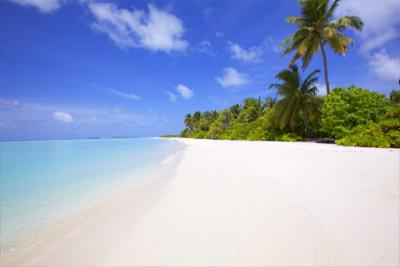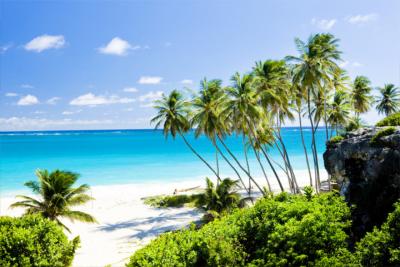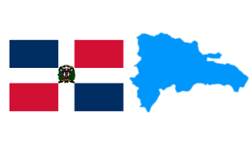Travel Offers
Travelmyne Featureprint
Distance
Dominican Republic – Caribbean and Diversity
Whether sun seekers, adventurers or lovers of culture – the Dominican Republic allures all of them. No wonder. The Caribbean paradise caters for all tastes. It offers impressive beaches and sporting opportunities, a variety of natural beauty and likeable inhabitants with a rich past.

Geography - Highest mountain range and Lowest point of the Caribbean
The Dominican Republic lies on the Caribbean island Hispaniola and borders on Haiti in the west. Mountains with a height of up to 3,000 metres characterise most parts of the country with the Pico Duarte as the highest Caribbean mountain range. Lake Enriquillo constitutes the lowest point in the Caribbean with 50 metres below zero. The east and north contain flat plains. The vicinity to the equator causes pleasantly warm temperatures all year with an average of 28 °C. Even in winter, it does not get colder than 16 °C. While the tropical climate in the north is accompanied by very high humidity, the south is slightly dryer.

Nature - From rugged mountains to rainforests to the steppe
The island state's nature is characterised by its diversity – from sparsely vegetated, rugged mountain peaks to the lush rainforests and mangrove swamps to the harsh steppes. Nearly a third of the area is protected. As diverse as the landscapes is also the fauna. Parrots, flamingos, turtles, iguanas and crocodiles are some of the prominent examples. Underwater you find the colourful world of the Caribbean seas with coral reefs and numerous fish. Whales and dolphins also populate the Caribbean waters.

Natural sights - Enjoying the beauty of Samaná and Punta Cana
A trip with the cable car through rich green, thick forests up to the local mountain of Puerto Plata leads you to the island's roof and offers a breathtaking view of the Caribbean idyll. In the bay of Samaná Peninsula you can watch humpback whales from boats. The peninsula accommodates several impressive waterfalls. Many tourists are drawn to the regions Punta Cana and Bávaro, where you can relax and snorkel with dolphins. Other highlights are remote islands such as Cayo Levantado and Saona Island. A little outside of the capital Santo Domingo you find the beautiful limestone cave complex Los Tres Ojos de Agua with great lagoons, which are fed by a underground river.

Culture - Once part of the Spanish Santo Domingo
The Dominican Republic once belonged to the Spanish crown colony Santo Domingo. This is told by the many historical testimonies – and by the inhabitants themselves, who are proud of their past. After the territory belonged to Haiti for a while, it became independent in 1844. Today about ten million people live in the island state. They take in the visitor with their friendly and vivacious nature.
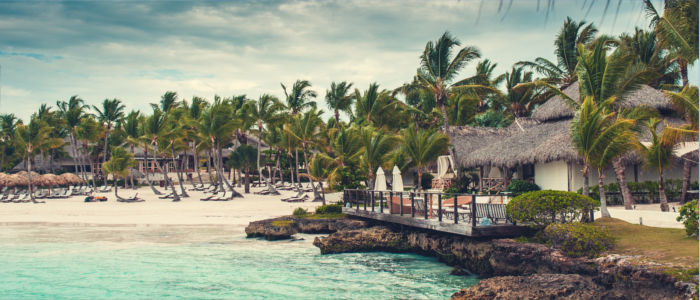
Cultural sights - Zona Colonial and Alcázar remind of colonial times
The capital Santo Domingo accommodates the Zona Colonial, the oldest settlement founded by Europeans which was inhabited permanently. Here you can stroll through the shadows of former Spanish aristocracy's residences, walk on historical cobblestone pavement or visit the continent's oldest church, the Cathedral of Santa María la Menor. The Alcázar de Colón, in which Columbus' son lived as the first viceroy of New Spain. The country's second biggest city Santiago is considered the centre for cigars and rum of high quality. Travellers can convince themselves of the products' quality on a tour through a factory - tasting included. A distinct sight in Santiago is the column with the statue of Christ, which is 67 metres high.

Experience - Celebrating wildly and enjoying local specialities
The most popular day for going out is Sunday. You hear the sounds of the fast, passionate rhythms of the merengue and bachata dances on the fiestas and live concerts, which are also sometimes performed in car washes. The theme park Imagine in Punta Cana offers a completely different atmosphere full of discos, concert halls and many leisure facilities. The lust for life is also apparent - apart from the nightlife - in the Dominican cuisine. At the coast you often find dishes containing fried fish, crab or scampis. Otherwise the Dominicans eat a lot of poultry meat, beef and pork. The warm Caribbean country is vegetated by a number of fruits, which you find on the locals' dining table: pineapple, orange, mango, papaya and of course banana, which you can also enjoy cooked or fried. Worth trying are also the country's rum and and the typical local beer Presidente. The Dominican Republic is also known for their great cigars. Other suitable souvenirs are jewellery made of amber and music CDs from Latin American artists. An insider tip for a shopping trip is the city Moca in the north.

Activities - Swimming, diving and surfing in the turquoise sea
White beaches lined by palm trees make sure that visitors can forget about your everyday life and relax. You can float on the pleasantly warm turquoise sea or dive into its underwater world. You will definitely not get bored in the Dominican Republic. The country is greatly suited for surfing, wind and kite surfing. A popular destination for those activities is the region around Cabarete, which regularly hosts world cups. Especially the heads of the country's four longest rivers near Jarabacoa and Constanza offer first rate conditions for rafting. Steep rocks thrill climbers.

Information
You can arrive at one of the Dominican Republic's airports (by direct flight from Europe) Punta Cana (PUJ), Santo Domingo (SDQ) and Samaná (AZS). In the bigger cities you can travel comfortably and cheaply in share taxis. For transregional tours travellers can rent a car or use the relatively well-developed bus network. The country's official language is Spanish and its currency is the Dominican Peso.
The Dominican Republic caters for all tastes. Besides recreation under wonderful Caribbean conditions, adventure travellers also get their money's worth – be it through varied entertainment or the diverse nature. Last but not least, the island inhabitants' vivacious, cordial culture with their history make the Dominican Republic a worthwhile destination.


